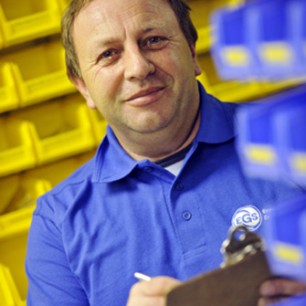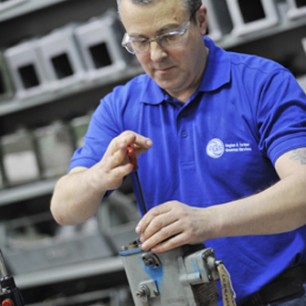EGS have completed a number of large retrofit projects for customers enabling them to make the most of their governing equipment and maximising profitability. This is how we go about the process:
Site survey and customer meeting
Firstly one of our Retrofit Engineers will attend the customer site in order to list the equipment and discuss how it works in detail. We will then collect as much information as possible on the customer’s current issues with existing equipment, the intended future lifetime use in addition to potential future gain.
This stage also consists of a discussion with the customer to determine what they want to gain from the retrofit in terms of added reliability, efficiency and functionality.
Why might a retrofit be advisable?
• To improve efficiency of processes and equipment thereby maximising profitability and getting the most of the technology in place
• Obsolete equipment – whilst we will try our hardest to repair this for you, in the event that this is no longer cost effective, we can quote for modern replacement
• Change of requirements for equipment function
• Synchronisation – with modern synchronising equipment this can be automatic with voltage and frequency matching
• Power management – generator protection including reverse power, overload, overcurrent – voltage, undercurrent-voltage, over-under frequency etc
• System monitoring – HMI displays DCS interfacing
• Healthy and safety – to implement new regulations
Proposal
Having compiled all the necessary information, we will present the customer with a proposal entailing all equipment that we recommend in line with their expectations for the retrofit. Depending on the application, we will include a separate section within the proposal listing the optional equipment that will significantly improve the desired outcome. Costing will also be advised, along with anticipated time frame which can be coordinated with forecasted shut down periods of the customer equipment.
Acceptance
Providing the customer approves the proposal, an order will be made following which we will order in all the necessary equipment and materials to complete the job.
In-house preparation
Our retrofitting department will then carry out all the necessary preparation including building the panels. Throughout this stage the customer is most welcome to witness what we do. Upon completion of the panel, all equipment will be wired and prepared for testing.
FAT testing
The customer is invited to attend our works to witness the testing of equipment. This is an essential stage of the process and is an opportunity for the customer to ensure the equipment fulfils all of their expectations as laid out in the proposal. Any necessary changes can be made until the customer is fully satisfied. The design will be signed-off by the customer.
Site installation and commission
The equipment will be delivered to the customer’s site along with written method statements and a risk assessment for the installation, submitted to the customer for approval. The equipment can be stored by the customer until a period in which it is convenient to have it installed and commissioned, in line with shutdown periods. The old equipment is disconnected, removed and can be recycled in a number of ways.
Final completion
Upon commission, the turbine or prime mover is handed back to the customer for their acceptance. The equipment will be warranted for 12 months.


